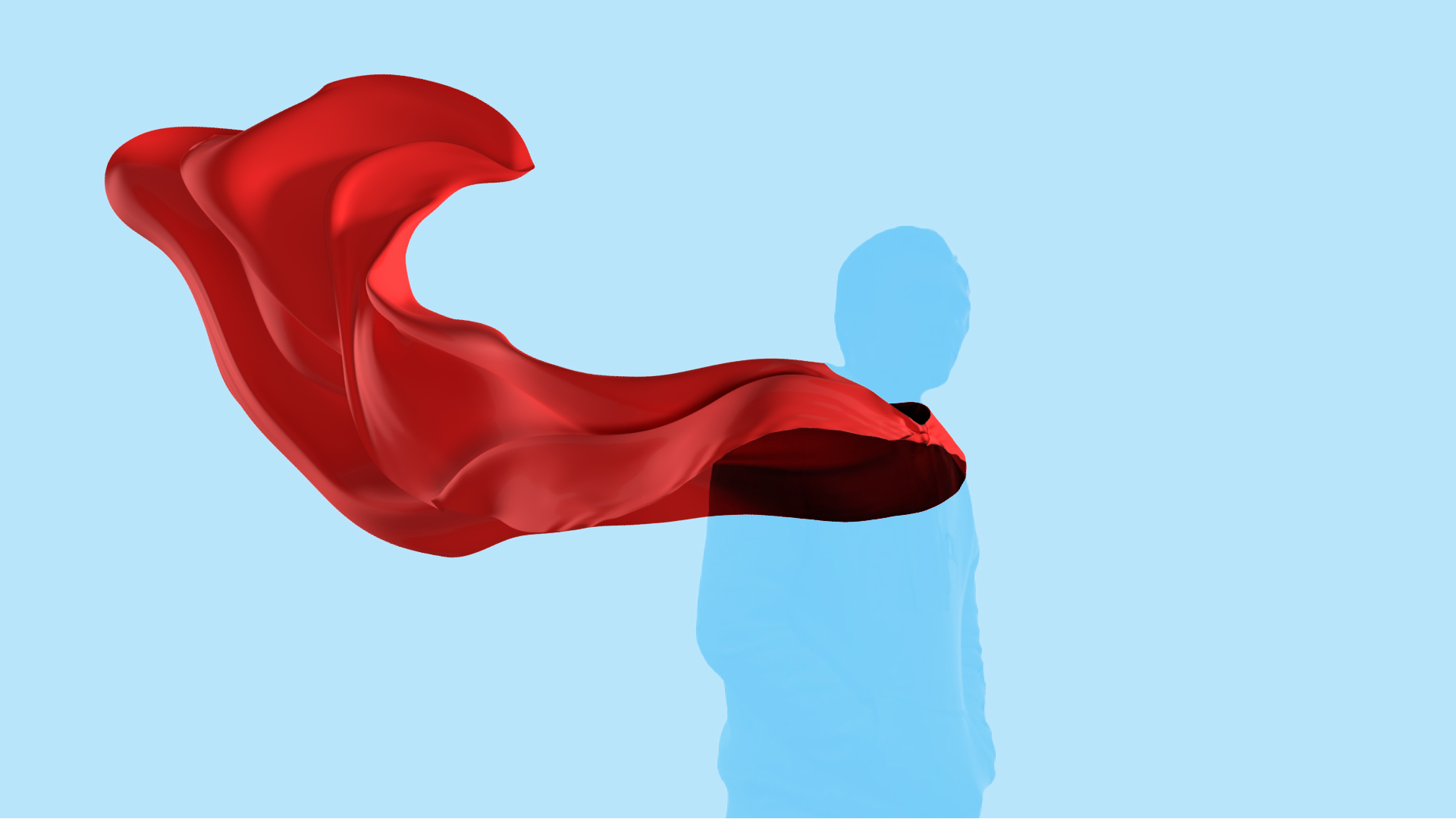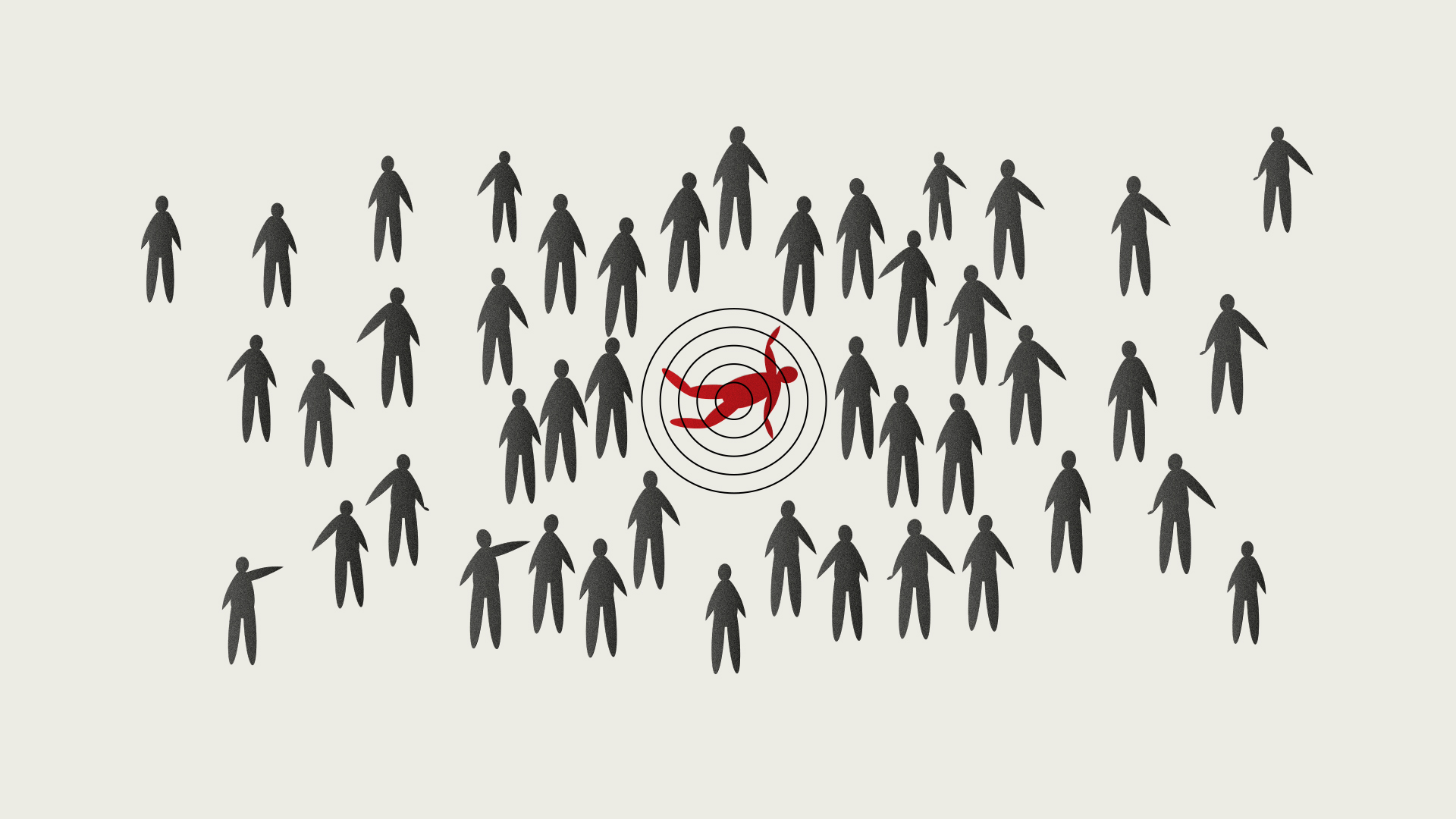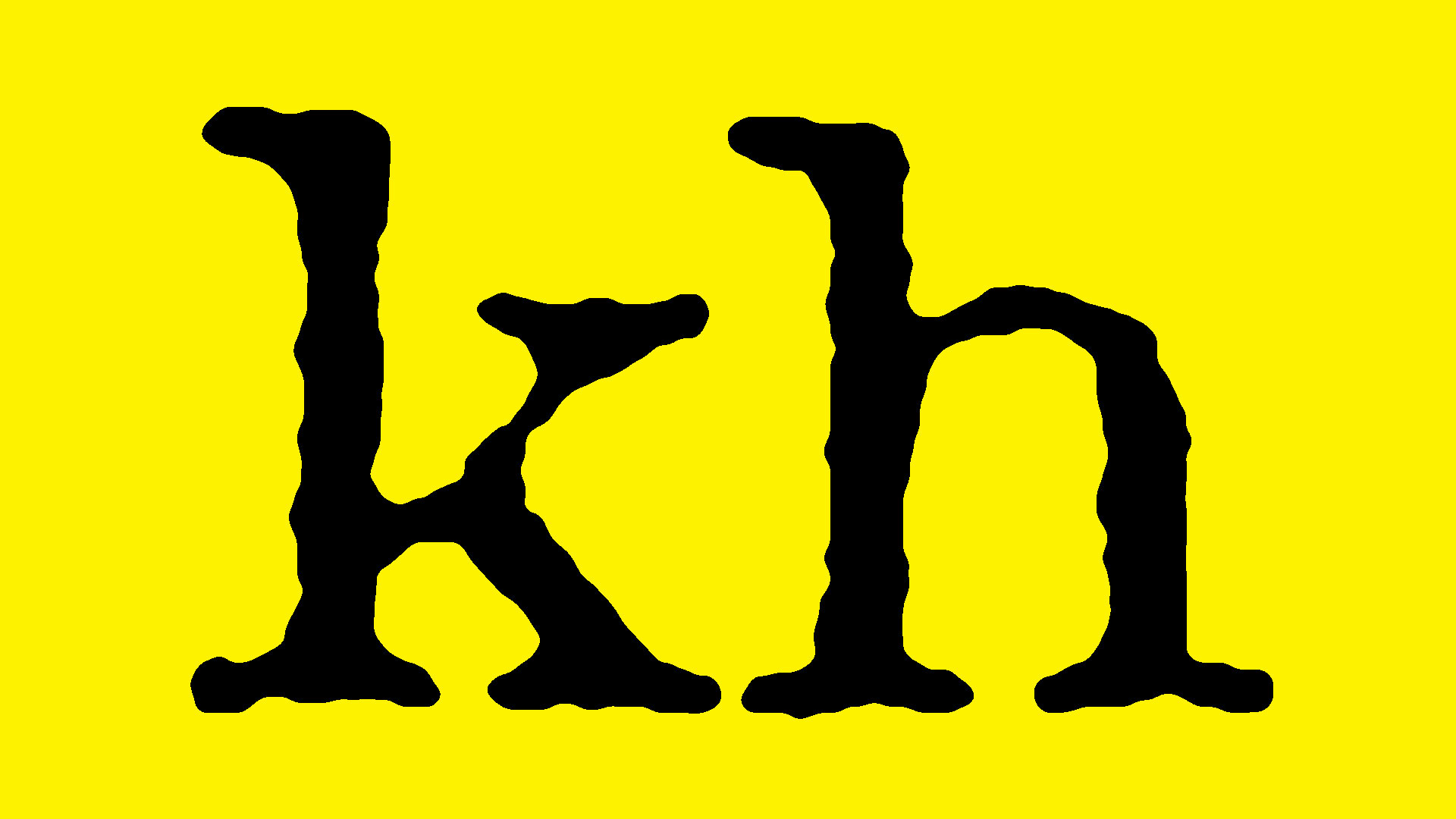The Making of a Hero
In the face of Hitler’s brutal and unprovoked attack on Poland in 1939, an unlikely hero arose—a hero today all but forgotten. His story invites us all to consider what we idealize in others.
Heroism, like the proverbial greatness, is often thrust upon a person. “I never wanted to be a hero; I was just doing my job”—so runs the common phrasing. The label of “hero” is frequently conferred by others. We rarely consider what that means and its impact on our interactions with people we look up to, yet it’s important in a world in which we connect more than ever before with others near and far.
Heroes come in all shapes and sizes, male and female alike. There are heroes from history, who achieved something notable or acted in a way worthy of praise or emulation. There are celebrity heroes, people in the public eye who represent or exemplify something admirable. There are fictional heroes, whether in books or on screen. There are also personal heroes, who might be more commonly known as role models. All represent some remarkable value or quality. The nature of the hero is malleable; yesterday’s hero can easily become today’s villain. But in each case they personify something, perhaps because of a specific act or the example they’ve set.
Fictional characters aside, the situation gets messy when we remember that heroes are also human. Behind those representations—the personae attached to them—are individuals with not only strengths but weaknesses, who make mistakes and who change their mind.
We tend not to react generously when heroes behave in a way contrary to the persona we’ve bestowed on them. Celebrities often encounter this when attempting to do something different; a pop singer writing a book, for instance, or a child celebrity growing up and doing adult things, or even a reputed beauty looking less exceptional without makeup. Public commentary in these cases is rarely kind. Such changes of direction appear startling only because we tend to expect people in the public eye to stay the same, to retain the limited form we’ve granted them.
The value of a good example is without doubt. Being a role model “is the most powerful form of educating,” according to the late American basketball coach John Wooden. We often emulate those we respect. So when we encounter aspects of a hero’s life that contradict our concrete view of that person, it’s unsettling.
“The heroes people admire can affect their own ethical ideologies, as people identify with their heroes’ perceived personal qualities and try to emulate their conduct. As models, heroes play important roles in the development of attitudes and identity.”
It’s especially difficult to properly assess historical figures who have come to represent something significant. There’s Winston Churchill and the British bulldog spirit, Mahatma Gandhi and passive resistance, Yue Fei and loyalty in the Jin Dynasty, or America’s founding fathers and US national identity. There’s Joan of Arc, Nelson Mandela, Alexander the Great, Ned Kelly, Robert E. Lee, Jomo Kenyatta, Cleopatra, Simón Bolivar, Boudicca, Otto von Bismarck, Peter the Great. All of these have acquired a heroic persona, often based on limited sources or even legend.
In some cases we know a lot about a person’s history, but popular conceptions choose to focus on a limited part of it. Churchill is a notable example. His achievements in Europe in the Second World War generally eclipse his less commendable roles in World War I or the Bengal Famine of 1943.
Histories and biographies, especially of a more recent vintage, have endeavored to present a comprehensive, “warts and all” approach to these figures. This has attracted resistance from those who prefer to maintain a pristine view of their historical heroes. But there’s a difference between a human and his or her representation or heroic cloak, if you will. A heroic personification is often simplistic, reductive, and (as already noted) conferred by others. It cannot be the sum of an individual, but in an age where information is legion, it’s hard to know how to navigate the spectrum between comprehensiveness and comfort. This clash is at the heart of many debates about historical figures, national identity, statues, and popular attempts to “cancel” public figures.
Where is the line between the person and the heroic cloak? Can we treat people as heroes in spite of their human failings? Is heroism actually worthwhile, or is it simply too unsubtle for our complex times?
In novels or films, the hero is often lauded for victories within the context of the story. The hero’s happy ending is narrow and closed: the soldier kills the enemy; the good guy gets the girl; the scientist or mathematician solves the riddle. So ends the story, and the reader or viewer walks away with exalted emotions and perhaps a determination to act. Such is the necessity and limitation of a saleable plot arc.
The situation is very different, however, with real-life heroes, even if they have similar pulls on our emotions. These heroes are human, with lives not unlike our own. The limits to what they can achieve are less surmountable in real life than in fiction. It’s common to hear about the power of human action, the ability each of us has to change our world; yet even extraordinary humans are limited in their accomplishments. In order to understand the real value of role models, the need to separate their humanness from their seemingly invincible cloak is ever-important.
Jan Karski: A Case Study
Actor Christopher Reeve, famous for his role as Superman, defined a hero as “an ordinary individual who finds the strength to persevere and endure in spite of overwhelming obstacles.” It’s a broad and encouragingly inclusive definition, one perhaps no better exemplified than by the extraordinary example of a young Polish man nearly a century ago. The story of this man—a true-life hero—is instructive as a case study to consider how heroism functions in our world.
Jan Karski had recently graduated from university when German forces blitzed Polish borders on September 1, 1939.
“The extent of the death, destruction, and disorganization this combined fire caused in three short hours was incredible. . . . It was apparent that we were in no position to offer any serious resistance.”
Attacking on three fronts, with tank forces nine times greater and an air force nearly five times larger, the Germans overran the country within days.
The rapid collapse of the million-strong Polish army was shocking to many but was perhaps inevitable, given that—under British and French advice—they had refrained from fully mobilizing in order to avoid undermining the Allied policy of appeasement. By late September, the besieged capital, Warsaw, had surrendered. Gradually the full sense of the situation became clear to a disoriented and bewildered nation: Russia and Nazi Germany had secretly agreed (in what came to be called the Molotov-Ribbentrop Pact) to split Poland between them, wiping it from the map as a nation-state; and Britain and France, despite gestures of support, had not come to help.
For the Polish, there was a strong sense of déjà vu. The once-powerful Polish-Lithuanian Commonwealth had been conquered and partitioned not once but three times (1772, 1793, 1795) by Prussian, Hapsburg and Russian forces. After the 1815 defeat of Napoleon (who had conquered and made the newly renamed Duchy of Warsaw a client state), Poland was punished for its coerced role in fighting alongside the French, and its client status was transferred to Russia, Prussia and Austria.
Following a rebellion crushed in 1831, the Russian-controlled Kingdom of Poland was fully subsumed into the tsarist kingdom; much the same happened in 1846 when Krakow rebelled against its Austrian rulers. Only through the post–World War I enthusiasm for national self-determination was Poland permitted to redraw its borders on international maps. Suffice it to say, by 1939 the reality of conquest and subjugation was both fresh and all too clear to the Polish people.
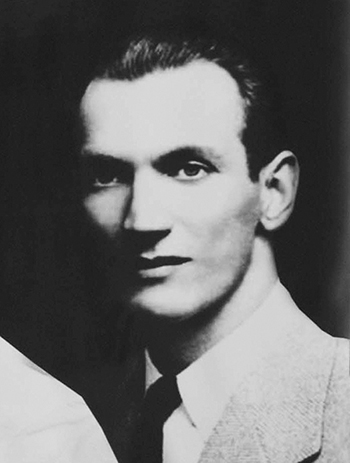
Polish resistance fighter Jan Karski
Małgorzata Miłaszewska-Duda, via Wikimedia Commons (CC BY-SA 3.0)
Karski wrote about this in his classic memoir, Story of a Secret State: “In Poland there is a meaning to defeat that perhaps is unknown in countries differently situated. Along with a strong sense of unity as a people, there is present an awareness that a defeat in war entails unique and drastic consequences. . . . When a Polish soldier was beaten on the battlefield, the specter of total annihilation swooped down upon the entire nation: its neighbors would pillage and divide up its land, and try to destroy its language and culture.”
Their familiarity with subjugation had conditioned the national attitude as Germany’s aim became clear. Historian Martin Gilbert records the words of German quartermaster general Eduard Wagner following a meeting with the German army chief of staff: “It is the Führer’s and Goering’s intention to destroy and exterminate the Polish nation.” The Polish response was both uncompromising and remarkably sophisticated—one in which Karski would play an important and heroic role.
Following the German attack, Karski, along with his fellow conscripts, quickly found himself detached and without direction. To their surprise, they encountered Soviet troops and were tricked into arrest; no one then knew about the secret pact between Russia and Germany, nor the Soviet part in Poland’s planned destruction. Forced into a cattle truck, Karski was transported to a Russian labor camp, from which he contrived to escape by fooling the authorities (thereby narrowly avoiding the notorious Katyn Massacre, where as many as 22,000 Polish officers were executed).
His escape was very much of the frying-pan-into-the-fire variety. He was—under false pretenses—part of an exchange agreement between the Nazis and the Soviets. The Russians transported him by train back to a distribution center in Poland, where he would likely face execution at the hands of the Germans. Still in his mid-twenties, Karski was growing up fast. “For the first time,” he wrote of his Nazi overlords, “I encountered brutality and inhumanity of proportions completely out of the realm of anything I had previously experienced.”
“We received neither blankets nor overcoats nor any protection whatsoever against the inclement, damp November weather. Medical treatment was non-existent. Here I learned how common and lightly regarded death could be.”
Before long, however, his captors herded him and others onto a train bound for a forced-labor camp. From this train he made another escape, this time with fellow soldiers, and journeyed by foot to Warsaw, which was by then wholly under the oppressive Nazi boot.
The city, and indeed Poland in general, was dramatically changed, bombed almost beyond recognition (according to later estimates, 70 percent of Warsaw’s architecture was destroyed during the war), and people’s lives had been torn apart. Implementation of Hitler’s plan to exterminate the Jewish population had begun in earnest, the walled-in Warsaw Ghetto—an area in the poorest part of the city—serving as a constant reminder in red brick of the horror of that initiative.
Karski joined and became increasingly important to the Polish Underground resistance movement. In concert with the network, he worked in constant secrecy, using numerous aliases and forged identity papers. Over several years he carried messages, acted as liaison, disseminated morale-boosting newspapers, all under watchful Nazi eyes. In a 1940 report he wrote, “I am willing to return and remain in Poland if the government deems that I would be more useful to the country. . . . I aspire to serve Poland in the most difficult of conditions.”
That same year, Gestapo officers trapped and captured Karski in order to beat, torture and interrogate him. Incredibly, he managed to escape again, this time from a guarded hospital. Despite his debilitated state, he continued to be a key member of the Underground until 1942, when he was ordered to cross Europe in disguise to deliver information to the Allies, including about the Warsaw Ghetto and the Nazis’ Endlösung der Judenfrage—the Final Solution.
Karski entered the ghetto secretly and in disguise, witnessing numerous horrors there. He wrote that “never in the history of mankind, never anywhere in the realm of human relations did anything occur to compare with what was inflicted on the Jewish population of Poland.” He watched the forced herding of Jews onto trains, knowing they were destined to be executed—though he could not conceive how. Only later did the full horror and efficiency of Nazi extermination camps come to be more widely known.
He knew how extraordinary the events he saw were. “I know that many people will not believe me,” he wrote, “will not be able to believe me, will think I exaggerate or invent. But I saw it and it is not exaggerated or invented. . . . All I can say is that I saw it and that it is the truth.”
After witnessing the ghetto firsthand, Karski crossed war-ravaged Europe under cover. In order to disguise his accent, he professed a toothache; when a well-meaning Belgian merchant insisted he be examined at a German Red Cross station, only previous damage from Gestapo torture concealed the fact that the toothache was fabricated.
Having successfully traversed the continent—though not without incident—he made his report to many leading figures in London, including both the Polish prime-minister- and president-in-exile, the British foreign secretary, US and British ambassadors, and the United Nations War Crimes Commission. He was then sent to the United States, where he met President Franklin Roosevelt, among others. He told of the operations of the Polish Underground, wartime living conditions, and the horrors of the Warsaw Ghetto and the Nazi Final Solution.
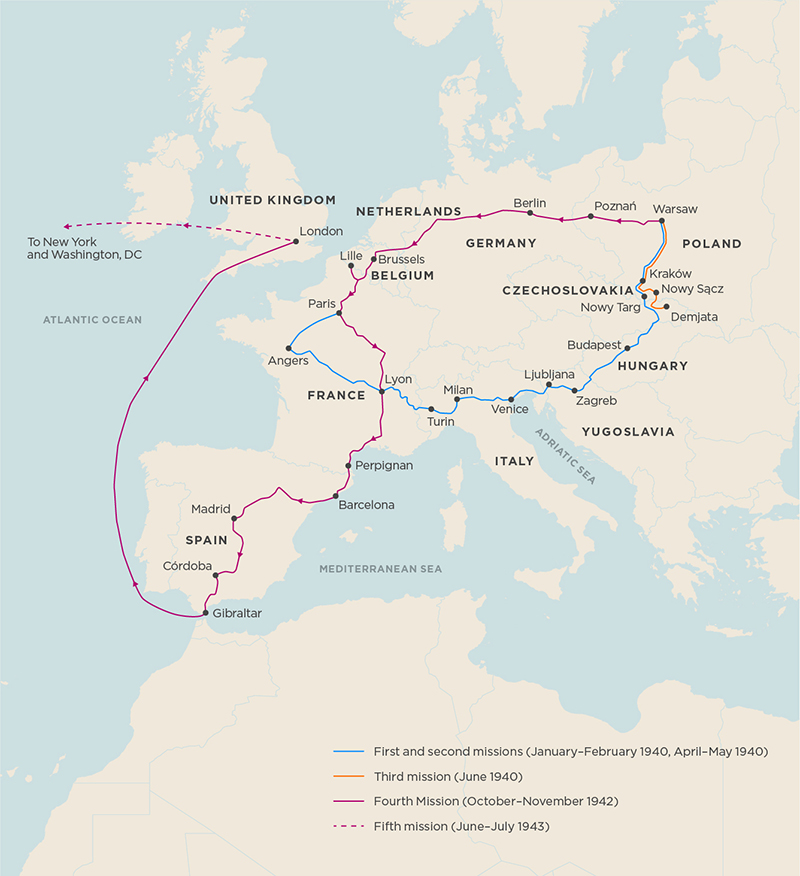
Jan Karski's missions on behalf of the Polish Underground, 1940–1943
Source: Compiled from Story of a Secret State by Jan Karski
It seems extraordinary to us today, but Karski was widely disbelieved. First, they could not comprehend that a Polish secret state could operate as fully and successfully as it did, without collaboration. “The idea that a State—with a parliament, government, judicial branch, and army—could function normally but in secret seemed to them utterly fantastical,” Karski wrote. And second, the horrors of Jewish extermination seemed too outrageous to accept. In a 1995 address at Stanford University, Karski recalled the words of US Supreme Court justice and presidential advisor Felix Frankfurter—a nonpracticing Jew of Austrian birth: “I did not say this young man was lying. I said that I was unable to believe what he told me. There is a difference.”
While many at the time doubted, others may in retrospect have overstated the importance of Karski’s report, leading Polish historian Adam Puławski to counter that the Allies already knew details of the Final Solution from other sources.
In any case, Karski’s heroism and firsthand knowledge of the atrocities did not alter Allied policy. Even public knowledge—Karski’s memoir was published in the United States in 1944 and sold 400,000 copies before the end of the war—did not change the situation for Poland or the Jews.
What Do We Value?
Karski is said to have remarked after the war, “I wanted to save millions, and I was not able to save one man.” Yet his efforts were undoubtedly heroic. He has since become a symbol of Polish pride and resistance. Though he was not Jewish himself, a statue of him stands outside the Polin Museum of the History of Polish Jews in Warsaw. A city square in Paris is named after him, and the Sejm (Polish parliament) named 2014 “Jan Karski Year.”
Like many heroes, a number of myths have attached themselves to him, some even appearing in reputable histories. And yet, despite his heroism, there were limitations to what he could achieve. As historian Andrew Roberts writes in the afterword to the 2012 edition of Karski’s book, “the might-have-beens of history are never more heart-rending than when applied to the story of this impossibly heroic young Pole.”
“If you wish to read about a man more courageous and honourable than Jan Karski, I would have no idea who to recommend.”
Karski achieved much, and yet not so much. By his own reckoning, he failed in his efforts to change the course of the war. Perspective is important here, and it is instructive to consider this when thinking about how we should view heroes more generally. Karski did many admirable things, but he was also a human being with limitations. Balance is critical when considering his life. That it was a case of might-have-been does not diminish his bravery, selflessness or strength of conviction—his overall character.
The world’s problems—ongoing violence and war, climate change, species extinction, geopolitical strife, hunger and poverty, existential threats to human existence—can seem overwhelming. It should be humbling to recognize that. Recalling a particularly tragic episode from his time in the Polish Underground, Karski remarked that “the world has become cold and unfriendly, nations and individuals separated by immense gulfs of indifference, selfishness and convenience. All too plainly, it marks the fact that the domination of mutual suspicion, estrangement, and lack of sympathy has progressed so far that even those who wish and strive for a remedy by every possible means are powerless and able to accomplish pitifully little.”
It’s a pessimistic view, but one that, decades later, is difficult to refute. It can often seem we live in a world with unresolvable problems. The earth and the universe in which it exists have proven too much for us to control, or even to fully understand. Looking to heroes and reveling in their achievements—whether current, historical or fictional—can be a welcome balm. But if that’s all it is, then that is a pity.
Our heroes are a reflection of what we value. They’re a byproduct of what we hold as important. Karski is a hero to many, despite his failures. What we know of his character and selfless dedication to a greater cause has made him seem worthy of that kind of honor. Others, on the other hand, may win our undying respect on the basis of their successes, with less regard to their underlying character.
This distinction has more to do with us than with them. It’s important that we choose our heroes carefully and wisely. There is value in heroism, and it would be a shame to misapply it. In essence, a true hero sets an example that can be followed, celebrated or emulated—an example of trying to do the right thing against all odds (whether or not others are watching). Before holding others up as heroes, it can therefore be helpful to understand the wider circumstances of their life. Distinguishing between the person and the heroic cloak is critical, but the value of focusing on character is often underestimated, especially given that positive examples are as much at the core of good parenting and mentorship as they are of heroism. Are our heroes—are we—the kind of people whom others would want to emulate because of the values and moral character they or we exemplify?
It’s worth keeping this in mind as we engage with a world that is ever more connected, and increasingly overflowing with knowledge and opinions. Doing so can not only help us navigate and manage our relationships with our far-flung or long-dead heroes; it can help us better evaluate the example we ourselves set for those who look up to us.

